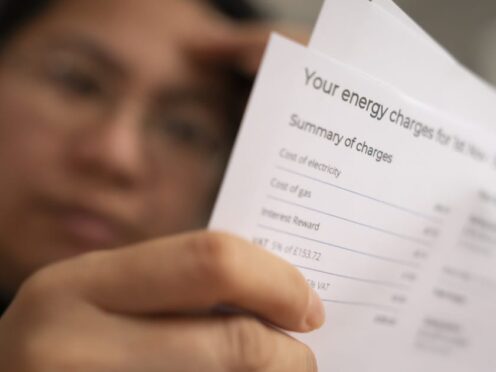
Energy prices will remain “high and volatile” over time, the head of the sector’s regulator has told MP, as it revealed so-called customer bad debt has soared by more than 50% over the past 12 months.
Ofgem chief executive Jonathan Brearley told the Energy Security and Net Zero Committee that prices “are still significantly higher than they were before, and when we look further out our best estimate is that prices are going to stay high and volatile over time”.
The regulator’s director general of markets, Tim Jarvis, later told the committee that bad debt, when customers are unable to pay their energy bill, was now “one of the biggest challenges we’ve got in the sector right now”.
He said: “If you look at bad debt over the last 12 months, it’s increased by over 50%. So it’s gone from £2 billion to over £3 billion.
“We’ve seen an increase both in the numbers of people in debt but also a much bigger increase in the total amount of debt, suggesting those people are getting further and further into debt.”
Historically, the cost of bad debt has been spread across all customers, at roughly around £23 a year.
However in February, Ofgem announced it was allowing a temporary additional cost to customers of £28, taking the overall charge to around £50 a year, to make sure suppliers had enough funds to support customers who are struggling.
However, Mr Jarvis suggested to the the committee that the charge was “unsustainable,” saying: “Going forward we think that risks being unsustainable, to be honest, spreading those costs across the whole customer base in that way is not the best way to tackle the underlying causes of that.”
Ofgem also addressed questions from the committee on its recently-ended consultation on standing charges, the fixed daily amount households pay to have energy supplied to their property, no matter how much they use.

The charges increased in April from the average 29.6p to an average 31.43p a day for gas, while the daily standing charge for electricity rose from 53.35p a day to 60.1p a day.
This means that for the average direct debit customer, a total energy bill’s standing charges increased from £303 a year to £334.
Ofgem announced in November that it was to consider alternatives to standing charges as wider cost of living pressures left customers continuing to struggle with bills.
Ofgem last looked at the issue of standing charges before the energy crisis, with findings revealing a “complex situation where there are winners and losers”.
If the standing charge facility was scrapped, suppliers would still have to cover their reasonable costs in other ways, which would mean charging a higher price for every unit of power used, it found.
The charge can also currently vary from region to region because of the differing costs in
supplying energy to a particular area.
Ofgem analysis has shown that while moving to a charge that reflected how much customers used would benefit low-income households overall, there could be a significant number of customers made worse off.
Ofgem household case studies show there are about 1.2 million low-income households with electric heating which use a large amount of electricity and so would be worse off by roughly twice as much as those who benefit.
Mr Brearley told the committee that Ofgem would release a set of proposals that would link together a change on standing charge with “what you do to protect those who are the most badly off as a result” in the coming weeks.
He said: “If we were to make a change to the standing charge, that has significant distributional consequences.
“So in simple terms, those who are on a low income and have high energy use, around 1.2 million customers, will be around £100 worse off were we to get rid of the standing charge completely.
Mr Jarvis added: “The more important thing is that we’re tying this up with our work on affordability, because our view is that if you make changes to the standing charge, it has to be accompanied by something that will protect those low income users who will be most harmed by changes to it.”

Enjoy the convenience of having The Sunday Post delivered as a digital ePaper straight to your smartphone, tablet or computer.
Subscribe for only £5.49 a month and enjoy all the benefits of the printed paper as a digital replica.
Subscribe